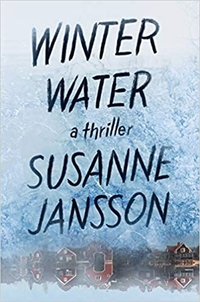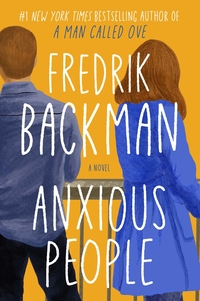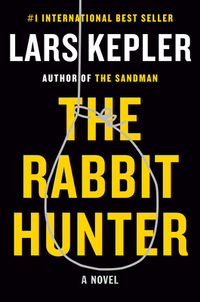The Details by Ia Genberg
 Friday, August 4, 2023 at 7:03AM
Friday, August 4, 2023 at 7:03AM 
First published in Sweden in 2022; published in translation by HarperVia on August 8, 2023
The Details is about “lives within our lives,” our “smaller lives with people who come and go.” The novel’s narrator, a woman who is aging into her senior years, recalls fragments of her past, memories triggered by fever, “people filing in and out of my face in no particular order.”
The narrator reminds me of the recurring “Sprockets” sketch on SNL. Mike Meyers played Dieter, a pretentious, humorless, self-absorbed German art/film critic who hosted a talk show. Dieter had little interest in his guests, whose responses to his questions typically made him feel “emotionally obliterated.” The protagonist in The Details suffered from some of the same self-inflicted melancholy when she was younger. In the grip of fever, however, her sense of self recedes and she embraces joy sparked by random memories of having lived. Or so she claims.
To be fair, the narrator asserts that even her younger self, always observational, was capable of “letting myself go and directing my attention outward,” where she found “a sharper sense of being alive” in “the alert gaze of another.” My impression is that her outward-directed attention is largely directed at mirrors or their human equivalent — people who reflected her attitudes and desires.
Like Dieter, the novel’s narrator is a brooding intellectual. She values deep conversations and rejects everything that is too shallow or superficial to meet her standard of worthy interaction. She condemns MTV and television shows in general (“To get absorbed by a show, to let yourself be swept up, would have been a sign of mental lassitude”). She has the same attitude about magazines, political debates, and conversations at family gatherings, viewing them only as “incidences of current trends, available to interpret for a deeper understanding of the world.” She doesn’t like people who tell anecdotes (“a form of chronic illness that attaches to some people”). Like Dieter, she is a humorless critic of her surroundings.
The narrator has fevered memories of four people who played important roles in her life. She first shares her memories of Johanna, a woman of velocity whose enthusiasm contrasted with the narrator’s inertia. She remembers Johanna’s kindness and kisses, their general agreement about literature (both are fans of Paul Auster), and Johanna’s encouraging remarks about the narrator’s writing (in contrast to lovers who didn’t want to read her writing, or those who wanted to read her writing but “didn’t get it, or who got it but had nothing intelligent to say.” The narrator’s relationship with Johanna made her feel safe because “she had started on me and wouldn’t give up.” The narrator is stunned by Johanna’s “sudden and brutal departure.” Perhaps the narrator believes Johanna gave up, but my sense that is that the narrator gave up on moving toward the future and Johanna grew frustrated with the narrator’s inability to set or achieve goals.
Before Johanna, the narrator shared an apartment with Niki. While Niki was messy, moody, and impulsive, she was also brilliant and funny. Their relationship was intense until Niki left for Galway with a guy named James. The narrator accepted Niki’s father’s request to track her down when Niki’s mother became ill. The quest proves Niki to be capricious and emotionally unstable, although it isn’t clear that the narrator sees her that way.
The third memory is of Alejandro, who arrived at the turn of the Millenium. Alejandro danced on stage for a jazz band. The narrator has deeply meaningful sex with Alejandro, sex that permits her “authenticity in the midst of this act, without a single thought in my head, without imitation, to be permitted to wreck my life once more.” What this means, beyond the narrator’s impression that they made a connection, is unclear to me. In any event, he became the lover against whom all other were measured. When Alejandro disappeared from her life under ambiguous circumstances, he left ambiguity in his wake. There seems to be a pattern of lovers suddenly leaving the narrator, but the narrator never asks herself whether she might be responsible for those abrupt departures.
Birgitte, a woman adrift who was shaped by her childhood trauma, is the fourth memory. Her shallowness, conflict avoidance, and “absence of personality” would not seem to make her memorable, but Birgitte is the narrator’s mother. She gave birth to the narrator during a “psychotic break.” For a time, she was into psychology and astrology and crystals and tarot cards, apparently giving them all equal weight. She was (according to the narrator) a “seeker,” a derisive term that implies “a pose, a new way of being superficial.” Divorced from Birgitte for fifteen years, her father cried when she died, wept for “a life lived but also spilled.” The narrator has little to say about Birgitte. Perhaps the narrator is choosing not to remember anything positive about her mother, the things that made her father mourn Birgitte’s passing.
Readers who are turned off by paragraphs that run for two or three pages should look for a different book. The density of the text requires some concentration. Some readers don’t want to make the effort. I don’t fault those readers, but I don’t fault writers for not catering to readers who prefer short chapters and plentiful paragraph breaks so they know where to place a bookmark.
I am probably similar to those lovers of the narrator who have “nothing intelligent to say” about the author’s writing. The narrator is something of a Debbie Downer. Not to stereotype, but whenever I pick up a work of Scandinavian literature, I prepare myself for an aftermath of depression. The Details fits that pattern.
I appreciate the details that accumulate in the pages of The Details. I appreciate the narrator’s ability to discuss failed relationships without obvious bitterness. I appreciate the concept of people who play important roles in our lives before they drift away or choose to disappear.
The novel is marketed as a book that demonstrates how connections shape a life, but I don’t see much shaping. How did the significant people in her life affect the narrator? I’m not sure. Her take seems to be: They were here, they’re gone, life moves on. I get that. I expect that we are more inclined to think about people who come and go as we gain age and experience. I suppose there is value in illustrating the transitory nature of most relationships, but I came away from The Details with an equal mix of admiration and indifference.
RECOMMENDED WITH RESERVATIONS
 TChris |
TChris |  Post a Comment |
Post a Comment |  Ia Genberg,
Ia Genberg,  Sweden in
Sweden in  General Fiction
General Fiction 


